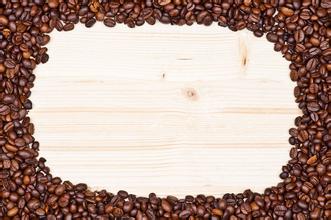Washing characteristics of evenly dried Salvadoran coffee beans introduction to the taste and quality of manor flavor description treatment
Salvadoran coffee washing
Coffee fields are endless, and most of them are harvested by machinery, which is in line with economic benefits. When 75% of the coffee fruit in the coffee garden turns red, mechanical harvesting is started, followed by the same pre-washing operation, which is moved into the sink to remove floating beans, sift out the sunken beans, and then use a large pulp screening machine to dig out the pulp and remove the pods covered with pectin. The next stage is separate from the washing method: the sticky pods do not need to be moved into the tank to ferment, but to the outdoor bean drying farm. Because of the dry climate in Brazil, the sticky pectin on the pods will harden in about a day or so. Then use a large number of manpower to turn up and down, so that the pods dry evenly inside and outside, so as not to return to moisture and stink. For about two to three days, with the help of the natural forces of sunlight and dry climate, the pods can achieve a certain degree of dehydration. Then further dry with a dryer, the water content is reduced to 10.5%, and the pods are stored in a special container for about 10 days to further mature, in order to stabilize the quality, remove sheep skins (pods) before export, remove coffee beans, and pack them in stages.
The Himalayan Manor, located in Santa Ana, a famous producing area in the Apaneca Mountains at an altitude of 1500 meters, is one of the few estates managed by Aida Batlle. The main varieties planted are bourbon.
The water washing method consumes too much water and causes serious pollution, so the semi-washing method is produced, which means that the coffee fruit first removes the defective floating fruit through the sink, then removes part of the colloid layer, and then washes it for an hour. Due to the short time of soaking and fermentation, pectin is still left on the bean shell. At this time, the coffee beans are spread in the sun to dry. Semi-washed coffee not only has the consistency and sweetness of sun beans, but also has the cleanliness and softness of washed beans, making the taste of coffee better. Salvadoran coffee ranks side by side with Mexico and Guatemala as the producer of Asa and Merdo, and is fighting for the top one or two places in China and the United States with other countries. The highlands of origin are large coffee beans of all sizes, which are fragrant and mild in taste. Like Guatemala and Costa Rica, coffee in El Salvador is graded according to altitude. The higher the altitude, the better the coffee. It is divided into three grades according to elevation: SHB (strictly high grown) = highlands, HEC (high grown central) = mid-highlands, and CS (central standard) = lowlands. The best brand is Pipil, which is what the Aztec-Mayan (Aztec-Mayan) called coffee, and it has been recognized by the American Organic Certification Society (Organic Certified lnstitut eof America) for its flavor: balanced taste and good texture.
Recommended baking method: moderate to deep, with a variety of uses
Top quality beans: El Salvador SHB
Taste characteristics: sour, bitter, sweet mild and moderate

Important Notice :
前街咖啡 FrontStreet Coffee has moved to new addredd:
FrontStreet Coffee Address: 315,Donghua East Road,GuangZhou
Tel:020 38364473
- Prev

Introduction to the quality characteristics of Yunnan Huangmi Coffee Bean Flavor description treatment method
About 40% of the pectin of Yunnan coffee bean yellow honey is removed; the drying method requires the most direct heat absorption, receives the most light drying, and lasts for about 8 days to reach a stable water content. About 25% of the pectin in red honey is removed; it takes longer to dry than yellow honey, and reduces the time of direct sunlight exposure, even in shading sheds, lasting about 12 days. Black honey is hardly.
- Next

Introduction to the quality and taste grinding scale of Panamanian Hartmann honey treated coffee flavor description
Panamanian Hartman honey treats Panamanian Hartman Manor producing area: Walken Variety: Kaduai altitude: 1260-1500 m treatment: honey Flavor: honey, Milk Chocolate, drupes come to Hartman Manor in Panama, we see that people grow coffee here always follow the requirements of green environmental protection, and the farm compost is made from the outer skin of pulp and cherries.
Related
- Detailed explanation of Jadeite planting Land in Panamanian Jadeite Manor introduction to the grading system of Jadeite competitive bidding, Red bid, Green bid and Rose Summer
- Story of Coffee planting in Brenka region of Costa Rica Stonehenge Manor anaerobic heavy honey treatment of flavor mouth
- What's on the barrel of Blue Mountain Coffee beans?
- Can American coffee also pull flowers? How to use hot American style to pull out a good-looking pattern?
- Can you make a cold extract with coffee beans? What is the right proportion for cold-extracted coffee formula?
- Indonesian PWN Gold Mandrine Coffee Origin Features Flavor How to Chong? Mandolin coffee is American.
- A brief introduction to the flavor characteristics of Brazilian yellow bourbon coffee beans
- What is the effect of different water quality on the flavor of cold-extracted coffee? What kind of water is best for brewing coffee?
- Why do you think of Rose Summer whenever you mention Panamanian coffee?
- Introduction to the characteristics of authentic blue mountain coffee bean producing areas? What is the CIB Coffee Authority in Jamaica?

